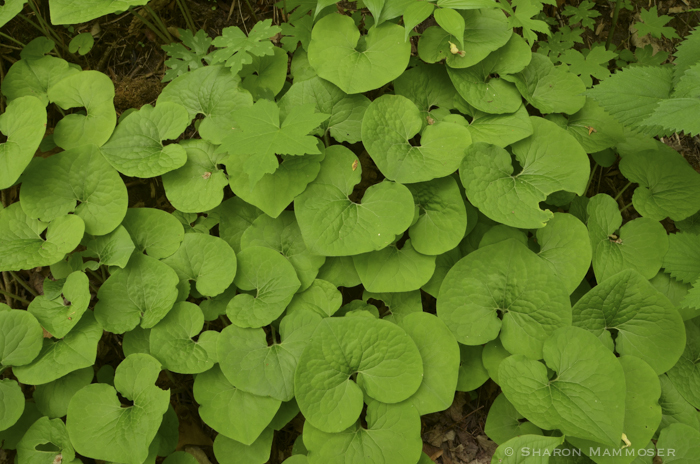Did you recognize last week’s puzzler as Wild Ginger or Asarum canadense? Just like the previous puzzler–Dutchmans pipevine, it is in the Birthwort family.
It has gorgeous, heart shaped leaves and does well in shady places. It is found in the eastern United States and is often cultivated because of how easily it will spread, covering a large area in a short amount of time. It can be 6 inches tall and up to a foot wide. If you spread the leaves apart to look below the foliage, you will see stems covered with white hairs. In spring, the blooms of this flower are brownish to purple colored and shaped like bells. Though quite attractive and shaped like a little brown jug on its side (hence, another common name–little brown jug), they are hardly noticed, except by flies, who visit them, likely mistaking them for something rotting. Most people never notice the small flower.
Traditionally, native people used some part of the plant for all kinds of remedies, including, to correct an irregular heartbeat, to relieve earaches, flatulence, stomach cramps, to treat kidney disorders and to treat snake bites.
Like plants such as bloodroot, trillium, dutchman’s breeches, and bleeding heart, wild ginger have a small fleshy structure called an elaiosome that is attached to the seed. Ants are attracted to these and take them back to their underground nests where they serve as food to their growing larvae. When the larvae are done with it, the ants carry the leftovers to their refuse pile, where some seeds may germinate. In this way, the plant and ants both benefit.
Resources:
Here’s the next puzzler, another with the theme of HEART SHAPED leaves. This one on a TREE. See if you can guess it!
Have a great weekend. See you again soon.


